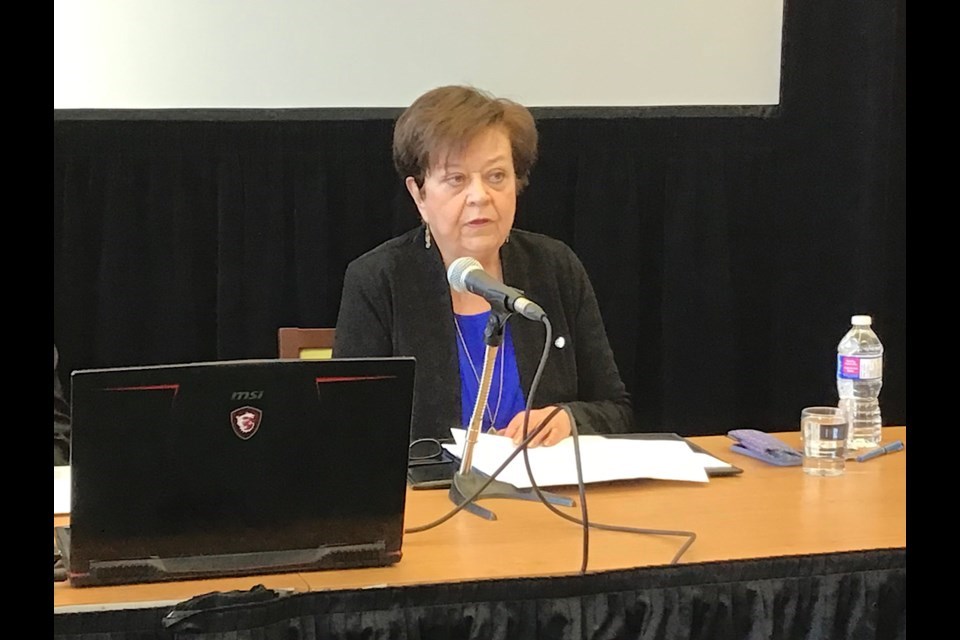Strong economic numbers and resource revenues is allowing Saskatchewan to post a $1 billion surplus budget for 2022-23.
Finance Minister and Deputy Premier Donna Harpauer delivered the budget in the legislature Wednesday afternoon. As expected, it contains no new taxes or tax increases, as well as increases across the board to health care, education, social services, public safety and the justice system, municipal revenue sharing and capital projects.
There is also a record $3.7 billion in capital investments, a reduction of up to $1 billion in operating debt, and a net debt-to-GDP projected to be 14.1 percent as of March 31. It is also projected to drop to 13.2 per cent by the end of 2023-24.
The theme of the budget is the government’s familiar slogan “Growth that Works for Everyone.” In a media conference with reporters prior to her address in the legislature, Harpauer pointed to figures released that day showing Saskatchewan grew by over 25,000 in 2022.
Harpauer also pointed to the Saskatchewan economy leading all provinces in growth in 2022, with private sector forecasts projecting the second highest growth in the nation in 2023.
She said the goal of the budget is to ensure growth continues.
"Saskatchewan’s population is growing at its fastest pace in 108 years," Harpauer said. "More people, more jobs, more opportunities. More doctors, more nurses, and more surgeries. More students, more schools, and more affordable child care. Safer families and safer communities. Strong fiscal management, a brighter future, and better quality of life for all Saskatchewan people, and that is what this budget is about. That is growth that works for everyone.”
On the financial side, the province is forecasting revenues of $19.7 billion, up $2.5 billion from last year's budget, powered by $9.6 billion in taxation revenue from corporate Income, personal income and provincial sales tax revenue, which is a $1.5 billion increase over last year.
Non-renewable resource revenue is forecast at $3.3 billion, up $435 million over last year, driven mainly by solid potash and oil price expectations.
On the flip side, expenses are forecast at $18.7 billion, up $1 billion or 5.9 per cent, from last year's budget. The net debt to GDP ratio is second lowest among provinces at 14.1 per cent.
Harpauer was noted debt retirement and lower borrowing generated $117 million in annual interest savings, which is “money that will be reinvested in people, programs and projects.”
Economic development is seeing $367.4 million allocated, up $39.7 million. It includes a $5 million increase for newcomer settlement and increased immigration, $4 million funding for the expanded Targeted Mineral Exploration Initiative, and an additional $2 million to the Film and TV Production grant bringing it up to $12 million.
Capital projects
The provincial budget includes a record $3.7 billion for capital and $15.2 billion in planned capital investment over the next four years.
It includes the following:
• $337.6 million is going to health care capital, an increase of $181 million, for projects including major ongoing construction at Prince Albert Victoria Hospital and the Weyburn General Hospital replacement.
• $442.9 million is going to transportation capital including over 1,000 kilometres of provincial highways improvements. Among the projects are twinning near Rowatt and Corinne on Highways 6 and 39 between Regina and Weyburn, completing passing lanes and widening on Hwy 5 from Saskatoon to Hwy 2, and planning for construction to extend twinning east of Saskatoon on Hwy 5.
• $147.3 million goes to education capital, in particular five new school capital projects, and support for ongoing planning and construction of 15 new schools and the renovation of five existing schools.
• $348.1 million is going to municipal infrastructure, coming from various programs such as the Investing in Canada Infrastructure Program, Canada Community-Building Fund, the New Building Canada Fund and other programs.
$973.1 million is to be invested to support municipal infrastructure projects over the next four years as part of the Capital Plan.
Finally, Crown corporations will invest $2.1 billion into major capital in 2023-24, largely through SaskPower, SaskEnergy and SaskTel.



